Climate charter gets “über cool” iPhone boost
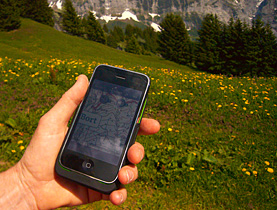
A charter to protect Europe's largest glacier system within the Jungfrau region has been launched with a high-tech spin – climate change tourist trails using iPhones.
The Jungfrau Climate Charter aims to strengthen the central Swiss region’s commitment to reduce CO2 emissions and better inform the six million annual visitors and local residents about climate change.
Taking into account the region’s “marked evidence” of the consequences of global warming such as glacier recession, rockfall, glacial lake formation and flooding, Bern University scientists have developed seven climate change trails for tourists to follow via GPS on iPhones.
The university’s Oeschger centre for climate change research compiled data from progress reports by the Intergovernmental Panel for Climate Change (IPCC) and its own studies to pinpoint areas affected, also tapping into resources such as climate change reconstruction from 18th century paintings of the area.
Swiss audio guide firm Texetera then programmed all the content to be accessible in a “trendy and über cool” gadget, along with GPS tracking, interactive maps, sound clips, images and videos that are intended to inform visitors about what they are seeing.
A plethora of downloadable applications for Apple’s iPhone enter the market each week for everything from calorie tracking to pet first aid, but the Jungfrau Climate Guide is believed to be the first audio guide that also uses GPS tracking and interactive maps.
Educating tourists
“People are not worried really when it comes to the personal consequences of climate change,” Kaspar Meuli, project manager from Bern University, told swissinfo.ch.
“We thought: ‘Ok, let’s show interested people there are effects of climate change already in Switzerland and here is where you can find them.”
“There is one section called climate tips. This tells users what they can do in their daily lives if they want to be more climate-conscious. I think it is a very important step to show people that there is room to act. And that everybody should actually go to the limits of what he or she can do in their surroundings.”
The SFr500,000 ($456,000) project produced 90 iPhones which can be hired from tourist offices across the Jungfrau region for SFr20 a day (and SFr1,200 to replace). A scaled-down version is available for iPhone owners to download.
Sämi Salm, CEO of Jungfrau Region Marketing, says the price reflects the amount of content provided and is an incentive to treat the gadget with care.
He hopes that by educating visitors with the scientific findings on the iPhone guides, tourism operations will build on the trend in disaster tourism that has recently attracted visitors to the region. At one point in 2006, hundreds of hikers and journalists camped out to view a section of the Eiger break away – setting a new record in visitor numbers for the local cable car company.
“What I like about this product is that we don’t have hysteria and mass movement where everybody is just waiting for something to happen,” Salm told swissinfo.ch.
“It is an educational tool and I don’t really see anything depressing about it.”
Three goals
The Jungfrau Climate Charter itself was welcomed as “a very courageous initiative” by the government’s State Secretariat for Economic Affairs (Seco).
“The Jungfrau region, with its scenic, historic and cultural wealth, is an appropriate place for making the correlation between science and politics with regard to climate evident to a wide public,” Marie-Thérèse Niggli, head of Seco’s Environment and Energy Policy Department told the charter launch.
The charter was signed by the Grindelwald, Gündlischwand, Lütschental and Lauterbrunnen municipalities, sponsors BKW Energy firm and had the backing of Bern University.
Its three goals: awareness building, voluntary reduction of carbon emissions in the Jungfrau area and communication at regional and international levels about their efforts. The iPhones enter into the latter category, designed to make globally recognised competences in climate research “accessible” and “attractive”.
The first measures for cutting energy emissions using wood-fired heating networks instead of heating oil, new energy technologies and expanding public transport have been implemented or are in the planning stages. It is expected to result in an annual reduction of 5,000 tonnes of CO2.
Jessica Dacey, Grindelwald, swissinfo.ch
The Jungfrau Climate Charter aims to:
1. Raise awareness among the local population, visitors and the wider public of the consequences of global warming, through concrete messages and visual examples based on scientific findings and historical fact,
2. encourage individuals, businesses, organisations and communities in the region to take personal responsibility and voluntarily implement measures to mitigate climate change and enhance energy efficiency, and
3. foster regional cooperation on climate issues between communities, science, tourism and other interested groups, and provide impetus for climate protection measures beyond Switzerland’s borders by providing information in an attractive and accessible form.
The municipalities of Grindelwald, Gündlischwand, Lütschental and Lauterbrunnen are the lead partners. Other collaborators are canton Bern, interested local businesses, transport and energy. Private individuals and legal entities can also sign up to the charter.
The iPhone guides are available for rent for SFr20 from tourism offices in Grindelwald, Murren and Wengen.
There are seven trails to follow:
Bort – Unterer Lauchbühl
Pfingstegg – Bäregg
Eigergletscher – Wengernap
Grütschalp – Mürren
Grindelwald
Murren
Wengen
Users are given a brief introduction to the equipment. Walkers can track their progress on a trail using GPS and listen to audio clips about climate change that can been seen from specific viewing points. Users can browse multimedia, such as videos of rockfall, images of glacier recession, scientific findings, read climate tips, and in a side gimmick identify flowers they see on the trails.

In compliance with the JTI standards
More: SWI swissinfo.ch certified by the Journalism Trust Initiative

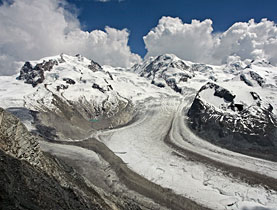
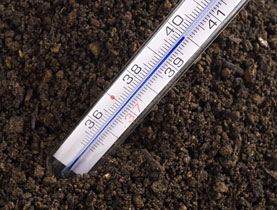
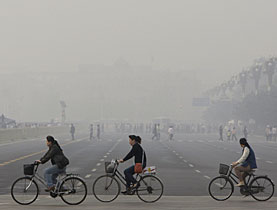
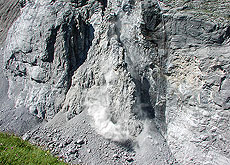

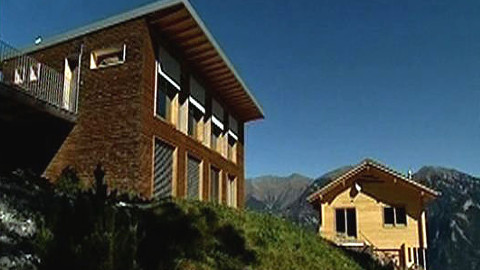
You can find an overview of ongoing debates with our journalists here. Please join us!
If you want to start a conversation about a topic raised in this article or want to report factual errors, email us at english@swissinfo.ch.